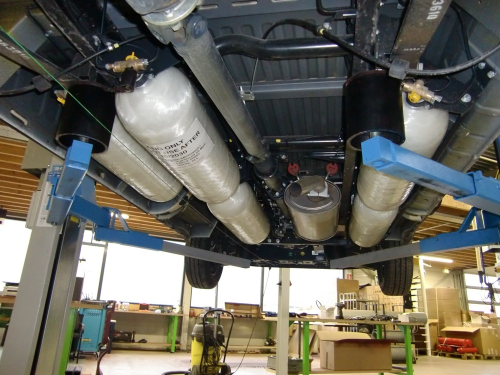
Netherlands based Greenes Group retrofits petrol fuelled cars and commercial vehicles with CNG tanks. The CNG tanks manufactured with glass fibre composite weigh less than tanks made from steel.
“A typical 32 litre capacity CNG cylinder manufactured from HiPer-tex glass fibre is 57% lighter than an equivalent steel cylinder and switching to this solution provides our customers several important practical advantages and in addition has a very positive impact on the environment,” reports Marc Dirkse, CEO of Greenes Group. Commercial vans can be fitted with up to 10 glass fibre cylinders of which 8 are installed under the vehicle. Up to 4 cylinders can be installed in most cars.
The benefits of composite tanks
HiPer-tex fibre can withstand immense impacts, has extremely long-term durability and considerably greater resistance to fatigue than steel, says Eric Debondue, Business Development Leader at 3B.
“Combined with the high corrosion resistance of HiPer-tex fibre these unique properties enabled the tanks (manufactured by GASTANK Sweden AB) to meet the very stringent ECE R110 regulation governing the use of Type IV pressure cylinders storing compressed natural gas for motor vehicles,” he adds.
This CNG tank design won the Composites Sustainability Award in the Market Growth category at the recent American Composites Manufacturers Association (ACMA)'s Composites 2011 trade show in February, and it was runner-up in the Transportation category of the JEC Innovation Awards presented in March.
3B, headquartered in Battice, Belgium, developes glass fibre products and technologies for the reinforcement of thermoplastic and thermoset polymers.




